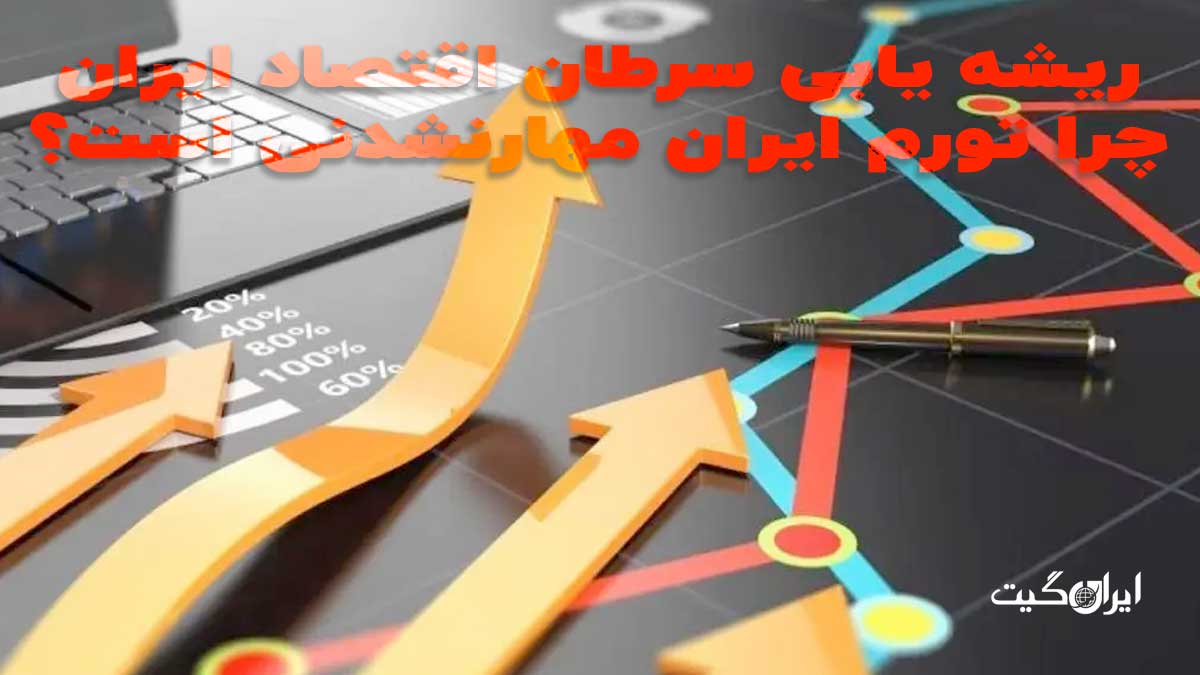Root Causes of Iran’s Economic Cancer: Why Iran’s Inflation is Uncontrollable
Part One
Why is Iran’s inflation uncontrollable? According to Iran Gate, with the beginning of the year 1402 and its naming by the leader of the Islamic Republic with a focus on controlling inflation, once again we witness the efforts of the so-called Velayi forces in the media, each presenting bizarre theories to achieve this slogan. However, regardless of how much these namings have alleviated the country’s issues, it is truly necessary to understand what must be done to control inflation in Iran’s ailing economy.
Many economists believe that Iran’s economy is built on a foundation full of stakeholder movements, and until this foundation is cleansed, no reformative actions can be taken. Experts believe that the prerequisite for cleansing this environment is to block the paths of rent distribution that have been provided to powerful players over the past five decades.
Some of these rents have been distributed directly and others indirectly, but ultimately what is essential is to stop this practice. Otherwise, there will be no bright horizon for controlling inflation in Iran’s economy, and any movement will be more or less fruitless. Iran Gate decided to examine the 7 main rents in Iran’s economy in a two-part report. In the first part, the focus is on energy and currency rents, as you will read further.
Who Controls the Playing Field?
The playing field in Iran’s complex and stakeholder-driven economy is designed in such a way that the path to wealth production is very difficult and full of obstacles. However, in contrast, successful players are those who know the paths to acquiring rents and have direct and unlimited access to them.
It might be said that the only thriving market in Iran’s ailing economy is the rent distribution market, as both the supply and demand sides are always active and engaged. Governments, for various reasons, never leave the demands of players benefiting from this boom unanswered in their role as powerful suppliers.
Among the most important of these rents are energy, currency, bank loan, land, permit, goods, and services rents. Thus, it can be said that the playing field has always been in the hands of the government on one side and stakeholders who, thanks to relationships, are busy thriving on the other.
Burning Capital to the Benefit of Stakeholders
This section is one of the most challenging and also the heaviest areas of rent distribution that has not let go of Iran’s economy for the past half-century. To better understand the costs of this section, it is better to return to the statistics of the year 1400. Considering the prices of 1400, the government annually distributes more than 3 trillion tomans of energy rent, which is an astounding and unbelievable figure.
Interestingly, part of this rent is destroyed due to energy waste by outdated machinery and equipment. Of course, this capital destruction should be considered alongside the devastation of the environment and water resources, which, if calculated, will confront us with unimaginable figures.
Another part of this rent is distributed in the form of multi-thousand billion tomans of profits to so-called industrial units, including steel, petrochemical, refinery, and power plants. This section not only brings no benefit to Iran’s economy but, with precise calculation, it can be seen that the loss of these industries due to rent distribution is far greater than those multi-thousand billion profits.
The Spring that Fills the Importer’s Pocket
One of the pains of Iran’s economy is the lack of separation between currency and rial budgets. In simpler terms, it can be said that the government institution in Iran has become addicted to using foreign exchange revenues, read oil, in the budget. Naturally, for utilization, it is compelled to introduce oil currency into the market. This method of government operation has two very dangerous and destructive outcomes, which are addressed below.
The first destructive effect of this policy is the short-term suppression of currency prices. This act is akin to subsidizing consumers of imported goods, and stakeholders are eager to take advantage of this section. On the other hand, this rent causes domestic production to lag behind in competition with imported goods, as the government previously allowed certain individuals to import the same goods at a cheaper dollar than the market.
Another result of this approach is the compression of the dollar price spring with the stabilization of the exchange rate. When the price jumps, it also delivers an additional blow to the body of domestic production. This is where the policymaker, with the knowledge of rescuing the people, enters and employs the preferential currency lever.
For example, at the end of the year 1401, the currency rate in the market surpassed 60,000 tomans, yet the government continued to offer its currency rent at 28,500 tomans. This event means that about 32,000 tomans go into the pocket of an importer who does nothing special except rely on relationships to control import monopolies.
The series of articles on the root causes of Iran’s economic cancer is exclusively written for Iran Gate. Other sections are available to you through the links below.
- Root Causes of Iran’s Economic Cancer: Why Iran’s Inflation is Uncontrollable – You were reading Part One
- Root Causes of Economic Cancer: Why Inflation in Iran is Uncontrollable – Part Two
- Root Causes of Iran’s Economic Cancer: Why Inflation in Iran is Uncontrollable – Part Three
- Root Causes of Iran’s Economic Cancer: Why Inflation in Iran is Uncontrollable – Part Four

